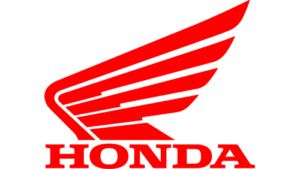
Striking the right balance between overproduction and underproduction what is incremental cost ensures efficient resource utilization.
Incremental cost and its effect on pricing
There is a need to prepare a spreadsheet that tracks costs and production output. There could also be other varieties of incremental employee contract costs like bonuses which progressively increase with each contract. Technically, entities should also recognise social security charges levied on the incremental part of remuneration as assets. Other less frequent examples of incremental costs include various types of success fees paid to advisors. Incremental revenue is the additional revenue that a company generates from new products, services, or initiatives. To calculate incremental revenue, you first need to identify the total revenue for the period in question.
What is Incremental Borrowing Rate?
Incremental analysis is useful when a company works on its business strategies, including the decision to self-produce or outsource a process, job, or function. Incremental analysis is a decision-making tool used in business to determine the true cost difference between alternative business opportunities. On the other hand, when incremental expenses exceed incremental revenues and a loss is incurred, an unprofitable situation results.
What Is the Incremental Borrowing Rate in Leases?

Alternatively, once incremental costs exceed incremental revenue for a unit, the company takes a loss for each item produced. Therefore, knowing the incremental cost of additional units of production and comparing it with the selling price of these goods assists in meeting profit goals. Analyzing production volumes and the incremental costs can help companies achieve economies of scale to optimize production. Economies of scale occur when increasing production leads to lower costs since the costs are spread out over a larger number of goods being produced. The fixed costs don’t usually change when incremental costs are added, meaning the cost of the equipment doesn’t fluctuate with production volumes.
- If incremental cost leads to an increase in product cost per unit, a company may choose to raise product price to maintain its return on investment (ROI) and to increase profit.
- Incremental costs are relevant in making short-term decisions or choosing between two alternatives, such as whether to accept a special order.
- Goods or services with high marginal costs tend to be unique and labor-intensive, whereas low marginal cost items are usually very price competitive.
- At its core, incremental cost of capital refers to a single unit that a company must raise.
- Analyzing incremental costs helps companies determine the profitability of their business segments.

It is a useful tool for making decisions about which projects or ventures to pursue. ICC can help you optimize your resources and make the most of your investment opportunities. Getting all relevant information about your operational expenses lets you know whether you are in the right financial state to cover additional production costs before starting any project.


These are the areas that would increase or decrease depending on whether a company decided to produce more or fewer goods or services, which is what long run incremental cost (LRIC) seeks to measure. Incremental costs are also used in the management decision to make or buy a product. Some custom products might not be readily available for the business to buy, so the business https://www.bookstime.com/articles/how-to-calculate-salvage-value has to go through the process of custom ordering it or making it. If no excess capacity is present, additional expenses to consider include investment in new fixed assets, overtime labor costs, and the opportunity cost of lost sales. Incremental analysis models include only relevant costs, and typically these costs are broken into variable costs and fixed costs.
How do you calculate the incremental cost at different scales of production?
- Analyzing production volumes and the incremental costs can help companies achieve economies of scale to optimize production.
- One of the most effective ways to do this is by injecting new capital into the business.
- Long-run incremental cost (LRIC) is a forward-looking cost concept that predicts likely changes in relevant costs in the long run.
- Conversely, fixed costs, such as rent and overhead, are omitted from incremental cost analysis because these costs typically don’t change with production volumes.
- The incremental cost of capital varies according to how many additional units of debt or equity a company wishes to issue.
- Incremental costs are also useful for deciding whether to manufacture a good or purchase it elsewhere.
- This could mean more deliveries from vendors or even more training costs for employees.
Using an accurate method to determine costs is a primary focus of cost accounting and financial control. Incremental and marginal costs are two fundamental tools to evaluate future production and investment opportunities. Incremental cost is how much money it would cost a company to make an additional unit of product. Analyzing incremental costs helps companies determine the profitability of their business segments.
- As noted previously, contract costs can be amortised over the expected contractual relationship period, which can exceed the current contract term.
- The “incremental” aspect of incremental cost of capital refers to how a company’s balance sheet is effected by issuing additional equity and debt.
- From the moment a company realizes they cannot determine the implicit rate, the challenge instead shifts to determining what the incremental borrowing rate should be.
- It takes into account all relevant costs and benefits when making investment decisions.
- Companies with the most accurate cost measurement can adequately define whether or not they are making a profit, and know how to gauge potential new products and investments.
- Variable costs are those that change with production or sales, such as raw materials and labor.
Incremental and marginal costs
Incremental Revenue 101: Everything You Need to Know



Leave A Comment